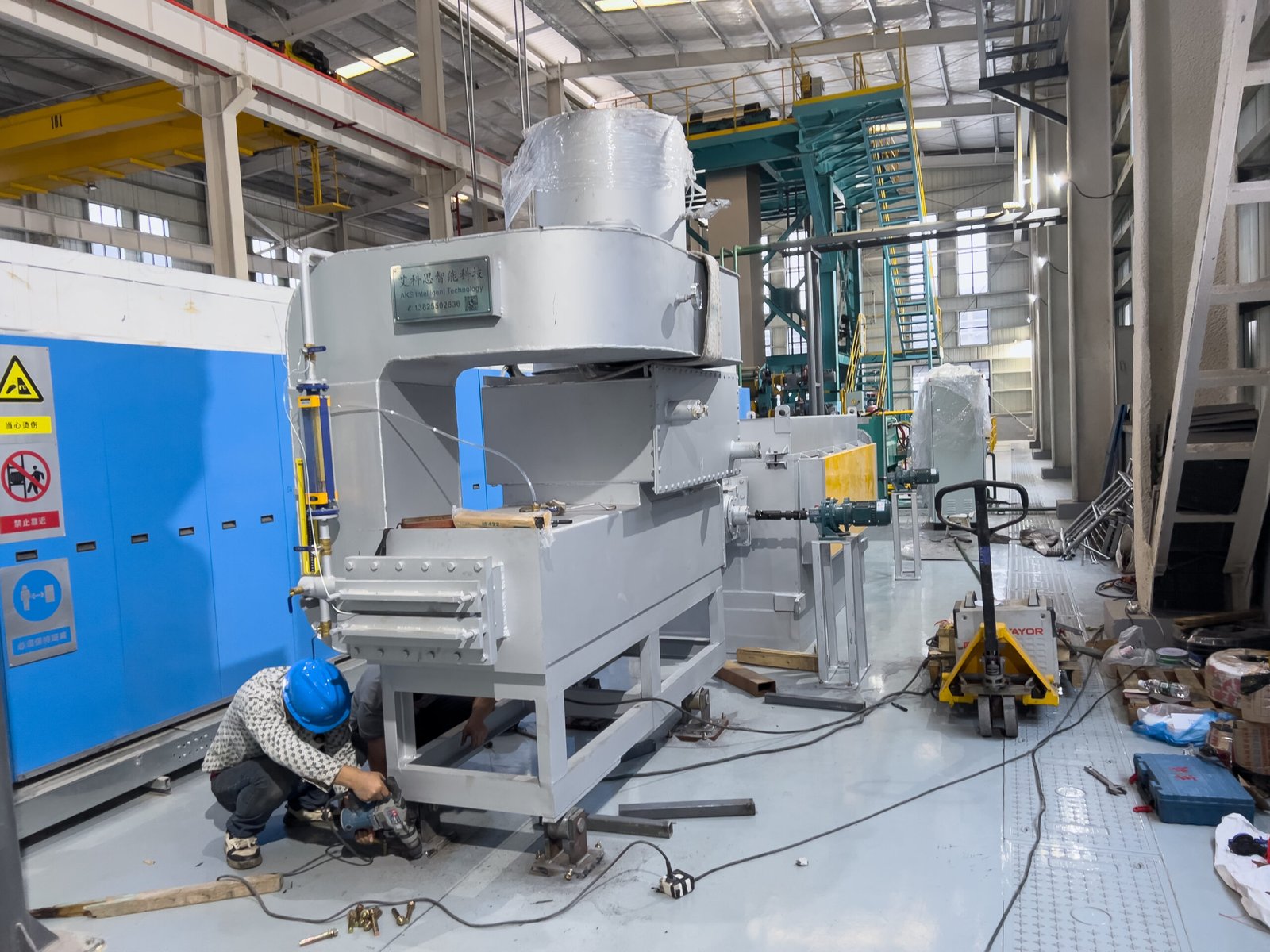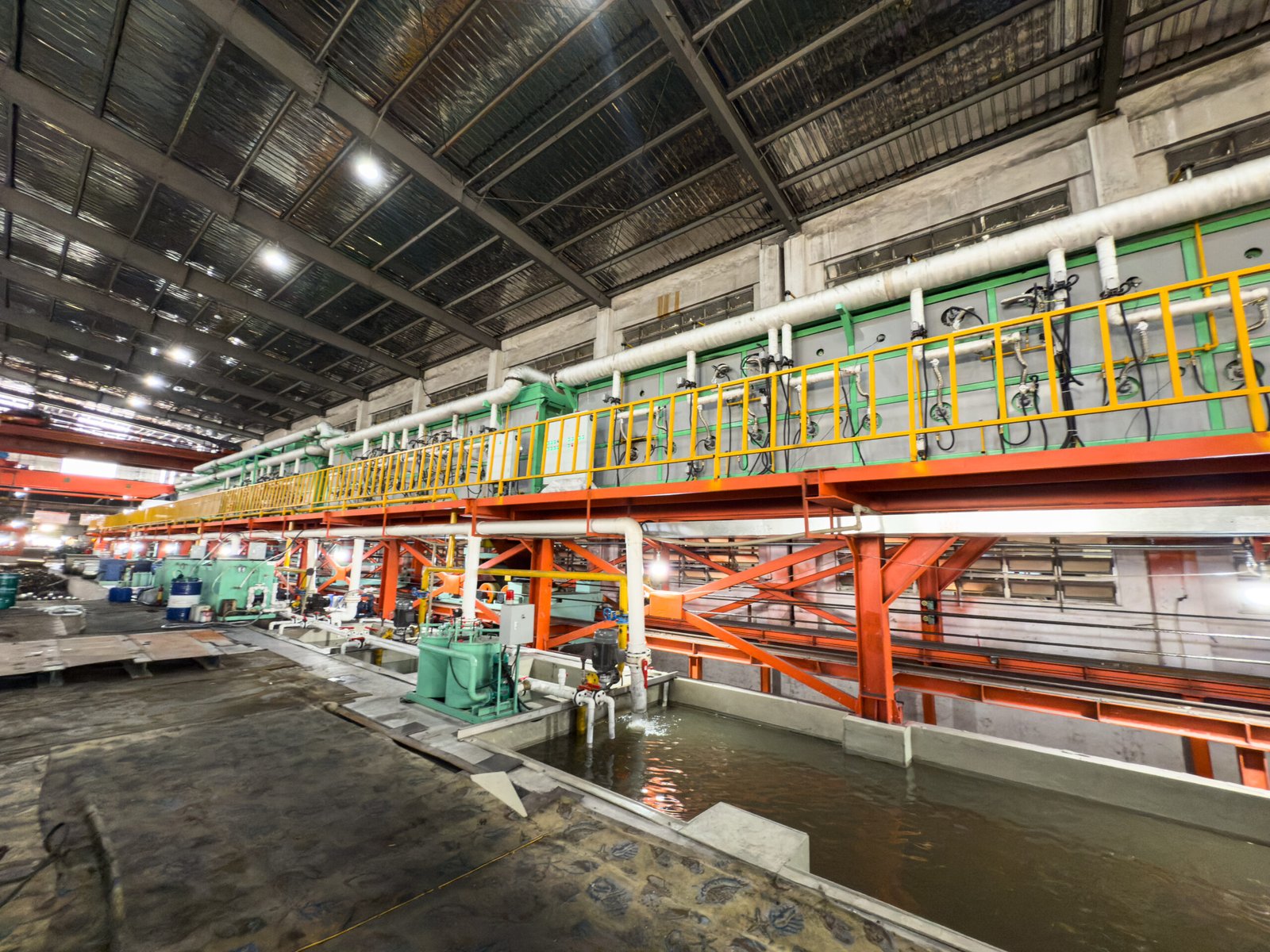What Are the Metallurgy Differences Between Bright Annealing Stainless Steel and Solution Annealing?

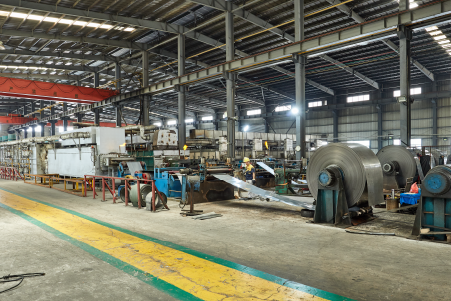
Are you struggling to choose the right heat treatment for stainless steel1? The wrong choice can lead to poor corrosion resistance, surface defects, and wasted production costs. Selecting between the two without understanding their deep metallurgical impact can compromise your final product's quality, affecting everything from appearance to structural integrity. This guide will clarify the core metallurgical differences, helping you make an informed decision that optimizes both aesthetics and functionality.
Bright annealing focuses on achieving a scale-free, bright surface finish while relieving stress and restoring ductility by heating in a controlled atmosphere. Solution annealing, a higher-temperature process, aims to dissolve harmful chromium carbide precipitates back into the steel's matrix to enhance corrosion resistance and structural homogeneity.
Understanding this fundamental difference is just the beginning. The choice impacts everything from your production workflow to your final product's marketability. As a furnace manufacturer at AKS, I've seen firsthand how the right process transforms a simple metal strip into a high-performance component. Let's explore these nuances further to ensure you're not just treating metal, but adding tangible value to the metal2.
It’s easy to view these two processes as interchangeable options for "softening" steel. However, that's a dangerous oversimplification. The real difference lies in their metallurgical intent. Think of bright annealing as a 'restorative cosmetic' treatment—it refines the grain structure and erases internal stresses, giving the steel its ductility and a pristine surface back. Solution annealing is more like 'deep tissue surgery' for the metal's microstructure. It targets a specific metallurgical flaw—sensitization caused by chromium carbide precipitation—and corrects it at a fundamental level. For one of our clients, a manufacturer of high-end kitchenware in India3, switching to a precise bright annealing process in our AKS furnace eliminated their costly and environmentally harsh pickling stage. Conversely, a client producing marine-grade components relied on our solution annealing expertise to guarantee the corrosion resistance required to withstand saltwater environments, a property bright annealing alone couldn't provide. This isn't just about heat; it's about targeted metallurgical transformation.
What is the purpose of bright annealing in stainless steel processing?
Are your stainless steel components failing to meet aesthetic and formability standards? Surface oxidation and internal stress from cold working can ruin your final product. Without proper treatment, you're left with dull, brittle materials that require costly secondary processing like pickling. Bright annealing solves this by simultaneously softening the steel and producing a clean, bright finish in one efficient step.
The primary purpose of bright annealing is to relieve internal stresses, soften the material, and restore its ductility after cold working. It is performed in a controlled, oxygen-free atmosphere to prevent surface oxidation, resulting in a bright, mirror-like finish that requires no further cleaning.
While achieving a bright finish is a significant outcome, the true value of bright annealing lies deeper within the metal's structure. It's a process of metallurgical recovery. After stainless steel is cold-rolled or drawn, its crystalline structure becomes distorted and elongated, packed with internal stress. This makes the material hard and brittle, unsuitable for further forming. Bright annealing carefully applies heat to allow the grains to recrystallize into a more uniform, stress-free state, restoring the steel's softness and ability to be bent, stamped, or drawn. At AKS, we've engineered our continuous Bright Annealing Furnaces to manage this process with extreme precision. We understand that it's not just about heating and cooling; it's about controlling the atmosphere and temperature profile to achieve specific mechanical properties. This precision is what allows our clients, from automotive part producers to manufacturers of decorative architectural elements, to create products that are both beautiful and functionally robust.
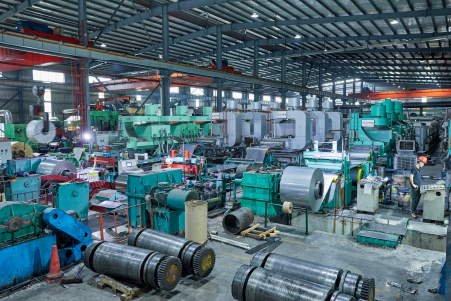
The metallurgical goals of bright annealing are twofold: restoring mechanical properties and perfecting the surface. This dual purpose makes it an incredibly efficient process in modern metal manufacturing. The process is a carefully choreographed thermal cycle designed to undo the damage of cold working, such as rolling, drawing, or stamping. These mechanical operations introduce a high density of crystal defects known as dislocations, which makes the material stronger but also much less ductile. By heating the steel to a specific recrystallization temperature, we provide the atomic energy needed for new, strain-free grains to form and grow, effectively erasing the internal stress. This restoration of a soft, ductile microstructure is essential for any component that requires further shaping. The "bright" aspect is a direct result of performing this entire cycle in an environment devoid of oxygen, which prevents the formation of a dull oxide layer, saving significant time and money by eliminating secondary cleaning operations.
Relieving Internal Stresses and Restoring Ductility
When stainless steel is cold-worked, it undergoes a process called strain hardening. The metal's crystalline grains are deformed, and a network of dislocations is created, which entangle and hinder further atomic plane slippage. This is why a cold-rolled steel strip is much harder and more brittle than its original state. The primary metallurgical purpose of annealing is to reverse this. By heating the steel to its recrystallization temperature—for austenitic stainless steels, this is typically above 900°C—we initiate a recovery process.
The heat provides the thermal energy necessary for the atoms to rearrange themselves into a more stable, lower-energy state. New, strain-free grains begin to nucleate at points of high internal energy, like the old grain boundaries, and then grow until they have completely consumed the old, deformed grain structure. The result is a fully recrystallized microstructure with significantly lower dislocation density, restoring the material's softness (ductility) and making it suitable for subsequent forming operations. Precise temperature control is paramount; insufficient heat leads to incomplete recrystallization, while excessive heat or time can cause excessive grain growth, which can be detrimental to certain mechanical properties like fatigue life.
As a practical example, one of our clients in Southeast Asia produces high-precision stainless steel tubing for medical devices. The tube drawing process induces significant hardness, making the tubes too brittle for the intricate bending required for surgical instruments. They use an AKS Bright Annealing Furnace with a multi-zone temperature control system. We collaborated with them to establish a precise thermal profile that heats the 304L tubes to approximately 1050°C, ensuring full recrystallization. This precision restores the required ductility for complex bending without fracture, while the controlled atmosphere ensures the parts remain sterile and clean, a non-negotiable requirement in the medical field.
Achieving a Scale-Free, Bright Surface Finish
The "bright" in bright annealing is a direct result of process atmosphere control. At the high temperatures required for annealing, the elements in stainless steel, primarily iron and chromium, are highly reactive with oxygen. If heated in air, they would rapidly form a thick, dark, and tightly adherent oxide scale on the surface. This scale is not only aesthetically undesirable but also problematic for subsequent manufacturing steps like welding, coating, or for applications where a clean surface is critical.
To prevent this oxidation, bright annealing is conducted within a furnace containing a controlled, protective atmosphere. The most common atmospheres are pure dry hydrogen (H2), which is highly reducing and produces the brightest possible finish, or a mixture of nitrogen and hydrogen (N2-H2), often derived from cracked ammonia. The key parameter for ensuring a bright finish is the dew point of the atmosphere gas, which is a measure of its moisture content. A very low dew point, typically below -50°C, is essential to starve the chemical reaction of the oxygen atoms needed to form scale. Our AKS furnaces are engineered with gas-tight muffles and advanced atmosphere circulation and control systems to maintain an extremely pure, low-dew-point environment throughout the heating and, crucially, the cooling cycles.
This focus on surface integrity is vital for many industries. For instance, a manufacturer of architectural panels or high-end kitchen appliances relies on a flawless, mirror-like finish as a key selling point. A bright annealed surface can have a surface roughness (Ra) of less than 0.1 micrometers. In contrast, a conventionally annealed and pickled surface will be clean but will have a duller, matte finish with a higher Ra value. For our clients in the consumer goods sector, the ability to produce a final product directly from the furnace without mechanical polishing or chemical pickling represents a massive competitive advantage in both quality and cost.
The Economic and Environmental Advantages
The most significant operational advantage of bright annealing is the elimination of post-treatment processes. The traditional method for removing oxide scale after annealing in air is acid pickling. This process involves immersing the steel in baths of hazardous acids, typically a mixture of nitric and hydrofluoric acid. Pickling is not only a bottleneck in production but also carries substantial costs and environmental liabilities. It requires significant capital investment in acid-resistant equipment, chemical storage, and sophisticated wastewater treatment plants to neutralize the spent acid and handle the resulting sludge.
By preventing scale from forming in the first place, bright annealing makes the entire pickling line redundant. This leads to a more streamlined, faster, and less expensive production workflow. The table below outlines a direct comparison of the two pathways, highlighting the clear operational benefits of adopting a bright annealing process. It simplifies the production chain, reduces chemical handling risks for employees, and significantly lessens the factory's environmental footprint.
| Feature | Bright Annealing | Conventional Annealing + Pickling |
|---|---|---|
| Surface Finish | Bright, mirror-like | Dull, matte |
| Post-Treatment | None required | Acid pickling & neutralization required |
| Process Steps | One (Heat Treatment) | Two+ (Heat Treatment, Pickling, Rinsing) |
| Chemical Usage | Protective gases (H2, N2) | Strong acids (HF, HNO3), bases |
| Environmental Impact | Low (gas consumption) | High (acid waste, water pollution) |
| Operational Cost | Lower overall (fewer steps) | Higher (chemicals, waste treatment) |
We have seen these benefits realized by our customers time and again. A large-scale producer of stainless steel strips for white goods in Europe transitioned from a conventional anneal-and-pickle line to one of our AKS continuous Bright Annealing Furnaces. They reported a 30% reduction in their processing cost per ton, a figure driven almost entirely by the elimination of their pickling operation. Furthermore, the integration of our furnace's waste heat recovery system, which uses hot exhaust gases to preheat incoming combustion air, reduced their natural gas consumption by 15%. This dual benefit of lower operational costs and improved sustainability demonstrates how the choice of heat treatment technology can have a profound impact on a company's bottom line and its corporate responsibility goals.
Bright annealing prevents surface oxidationTrue
Bright annealing is performed in an oxygen-free atmosphere, which prevents the formation of oxide scale on the stainless steel surface.
Bright annealing eliminates picklingFalse
While bright annealing reduces the need for pickling by preventing scale formation, some applications may still require light pickling for optimal surface quality.
How does solution annealing differ from bright annealing in terms of metallurgy?
Is your stainless steel failing in corrosive environments despite looking perfectly fine? The invisible enemy might be improper heat treatment that leaves the metal vulnerable. Microscopic carbide precipitates can rob your steel of its corrosion resistance, leading to premature intergranular failure and costly replacements. Solution annealing is the specific metallurgical process designed to dissolve these harmful precipitates, restoring the material's intended protective qualities from the inside out.
Metallurgically, solution annealing's primary goal is to dissolve chromium carbide precipitates back into the austenitic matrix by heating to a high temperature (typically >1010°C) and then quenching rapidly. Bright annealing's main purpose is stress relief and recrystallization, focusing on mechanical properties and surface finish.
The distinction between these two processes goes to the very heart of why we use stainless steel in the first place: corrosion resistance. While bright annealing4 perfects the surface and formability, solution annealing fortifies its chemical defenses. This is especially critical for austenitic stainless steels (like the 300 series) which can become "sensitized" during fabrication processes like welding. This sensitization is a metallurgical disease, creating pathways for intergranular corrosion. As an engineer at AKS, I've consulted with numerous clients in the chemical processing and marine industries where this is a non-negotiable requirement. They aren't just buying a furnace; they are buying the assurance that their material will perform under the harshest conditions. Understanding the science behind dissolving chromium carbides is paramount to delivering that assurance.
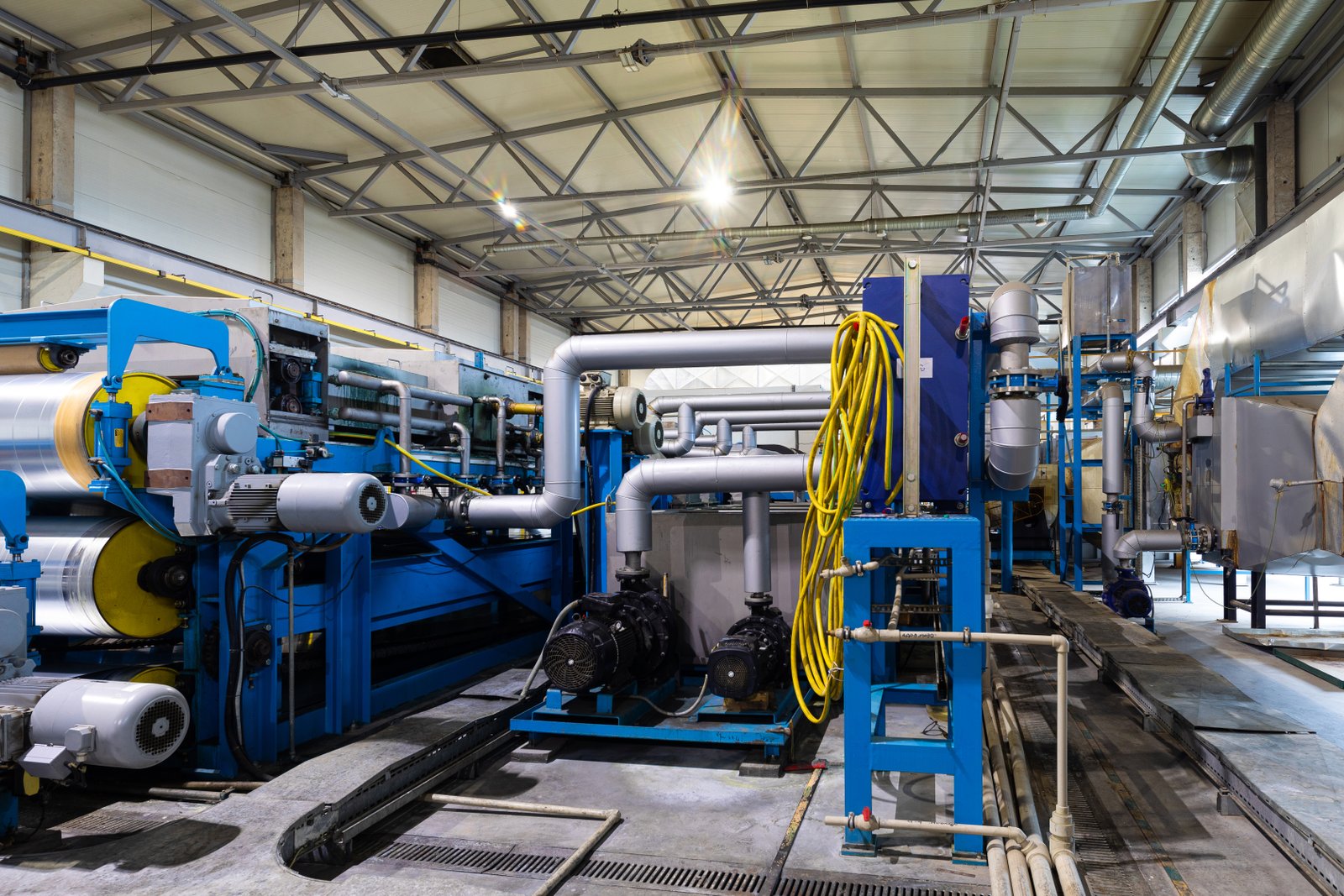
At its core, solution annealing is a corrective, high-temperature thermal treatment. Its purpose is not primarily to soften the steel—though it does—but to homogenize its microstructure on an atomic level to maximize corrosion resistance. This process directly counters the damaging effects of "sensitization," a phenomenon where chromium carbides precipitate at the grain boundaries. By heating the steel to a sufficiently high temperature, these carbides are dissolved back into the steel matrix, much like dissolving sugar in hot water. The subsequent rapid cooling, or quenching, is critical to lock the chromium in solution, preventing it from precipitating out again. This ensures that a continuous, protective layer of chromium oxide can form on the steel's surface. Bright annealing, while it can be performed at similar temperatures, is fundamentally focused on the mechanical and aesthetic aspects unless specifically designed to also meet solution annealing criteria.
The Phenomenon of Sensitization and Carbide Precipitation
The legendary corrosion resistance of stainless steel comes from a high chromium content, typically above 10.5%. This chromium reacts with oxygen in the environment to form a very thin, invisible, and chemically inert layer of chromium oxide on the surface. This "passive layer" is what protects the iron in the alloy from rusting and other forms of corrosion. It is self-healing; if scratched, a new passive layer will form instantly as long as oxygen is present.
However, this protection can be compromised from within. When austenitic stainless steels, such as the common Grade 304, are held within a critical temperature range of approximately 425°C to 815°C (800°F to 1500°F), a damaging reaction occurs. The carbon within the steel alloy has a strong affinity for chromium at these temperatures. It migrates to the grain boundaries and combines with the chromium to form chromium carbide (Cr23C6) precipitates. This process effectively robs the regions immediately adjacent to the grain boundaries of the chromium they need to form the protective passive layer.
The consequence of this chromium depletion is severe. The areas along the grain boundaries become highly susceptible to intergranular corrosion5. When the steel is exposed to a corrosive medium, the attack follows these weakened, chromium-depleted paths. This is known as intergranular corrosion, and it can cause the material to lose its integrity and fail catastrophically, even while the faces of the grains remain untouched. This is a particularly insidious problem in welded structures, where the heat-affected zone next to the weld bead cools slowly through this critical sensitization range.
The Mechanism of Solution Annealing: Dissolution and Quenching
Solution annealing is the definitive metallurgical fix for sensitization. The process involves two critical steps: heating to a high temperature (the "solution" step) and cooling rapidly (the "quenching" step). For most 300-series austenitic stainless steels, the solution annealing temperature is between 1010°C and 1120°C (1850°F and 2050°F). At these elevated temperatures, the thermodynamics shift, and the chromium carbide precipitates become unstable. They dissolve, releasing the chromium and carbon atoms back into the solid solution of the austenite matrix, restoring chemical uniformity throughout the material.
After holding at this temperature long enough for full dissolution, the steel must be cooled rapidly through the sensitization range (815°C to 425°C). This rapid quench is essential. It does not allow enough time for the carbon and chromium atoms to migrate to the grain boundaries and re-form the harmful carbide precipitates. The chromium is effectively "frozen" in solution, ensuring it is evenly distributed and available to form the protective passive layer across the entire surface of the steel, including the grain boundaries. For heavy sections or large fabrications, a water quench is often necessary to achieve the required cooling rate. For thinner materials like strips or tubes, a rapid forced gas quench inside a continuous furnace can be sufficient. Our AKS Bogie Hearth Furnaces are frequently used for solution annealing large welded components, and they are designed with powerful quenching systems to meet the stringent cooling rates required by industry standards like ASTM A262.
Comparing Microstructures: Solution Annealed vs. Bright Annealed
Examining the microstructure under a microscope reveals the fundamental difference between the two treatments. A properly solution-annealed stainless steel will exhibit clean, well-defined grain boundaries, free from any visible carbide precipitates. The austenitic grains will typically be equiaxed (having roughly equal dimensions in all directions), indicating a homogenous, stress-free state. This "clean" microstructure is direct evidence of maximized corrosion resistance.
In contrast, a material that has only been bright annealed at a lower temperature (for example, at 950°C purely for stress relief) may tell a different story. While it will also show a recrystallized, stress-free grain structure, it might still contain carbide precipitates at the grain boundaries if the material had been sensitized prior to the treatment. This is because the lower temperature was insufficient to dissolve them. The process would have successfully restored ductility but failed to solve the underlying corrosion vulnerability. It is important to note, however, that it is possible to perform a bright solution anneal. This is done by heating to the full solution annealing temperature in a protective atmosphere and then using a sufficiently rapid gas quenching system. Our advanced continuous Bright Annealing Furnaces are capable of this, providing the best of both worlds—full corrosion resistance and a perfect surface finish—for thin-gauge products.
We encountered a classic case with a client manufacturing high-performance automotive exhaust systems. They were experiencing field failures due to intergranular corrosion near the welds. Their initial process involved a lower-temperature anneal that was not a true solution treatment. After analyzing the failed parts, we recommended a post-weld solution annealing cycle in one of our Bell-Type Annealing Furnaces, which can accommodate irregularly shaped parts. By heating the components to 1060°C and following with a controlled nitrogen quench, they successfully dissolved the weld-induced carbides. This change eliminated the corrosion failures, dramatically reduced warranty claims, and solidified their brand's reputation for durability in a demanding market.
Solution annealing dissolves chromium carbidesTrue
Solution annealing heats stainless steel above 1010°C to dissolve harmful chromium carbide precipitates back into the matrix, restoring corrosion resistance.
Bright annealing improves corrosion resistanceFalse
Bright annealing primarily focuses on surface finish and mechanical properties, not corrosion resistance, unless specifically designed to meet solution annealing criteria.
What are the key advantages and disadvantages of bright annealing stainless steel?
Considering bright annealing6 for your stainless steel products? The gleaming finish is attractive, but it's crucial to weigh the full spectrum of pros and cons. The primary advantage is producing a part that is both mechanically sound and aesthetically finished in a single step. However, the process requires significant capital investment and is not suitable for all material thicknesses or applications, potentially creating limitations. Understanding this trade-off is key to making a smart investment.
The main advantages of bright annealing are its superior surface finish, elimination of costly and hazardous acid pickling, and improved process efficiency. Key disadvantages include higher initial furnace costs, limitations on material thickness for effective cooling, and sensitivity to atmosphere purity.
Bright annealing represents a leap forward in producing high-quality stainless steel components, particularly for applications where aesthetics and surface cleanliness are paramount. By integrating the annealing and finishing steps, it streamlines the production line, reduces lead times, and eliminates the environmental and safety hazards associated with acid pickling. I’ve seen countless clients in the appliance, architectural, and electronics industries build their competitive edge around the flawless finish that only bright annealing can provide. However, this advanced process is not a universal solution. The technology, particularly the requirement for a pristine, controlled atmosphere7, demands a higher level of operational discipline and upfront investment. The physics of heat transfer also place practical limits on how quickly thick sections can be cooled, which can make it unsuitable for certain heavy-duty applications where a simple anneal-and-pickle process remains more practical.
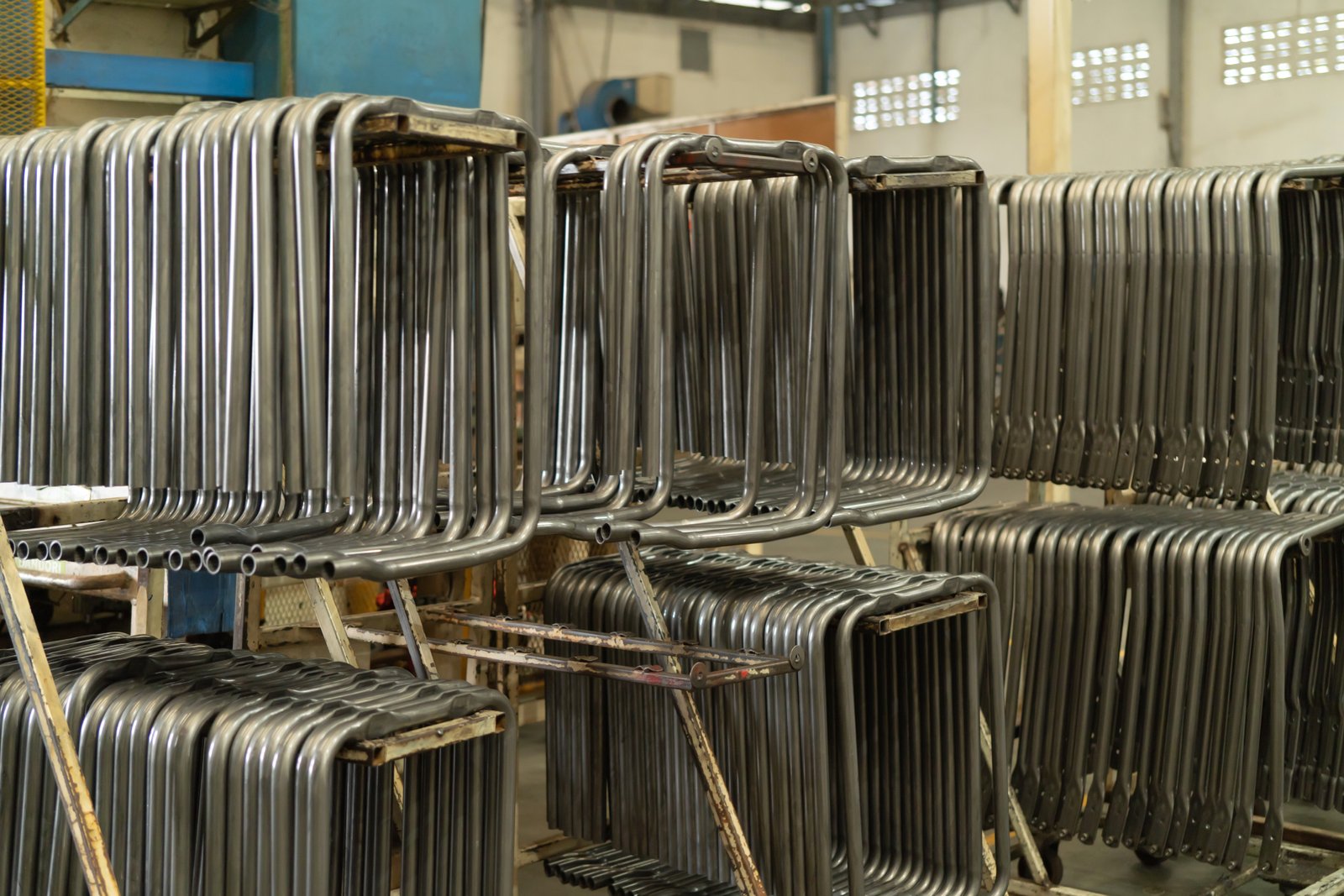
The decision to invest in bright annealing technology is a strategic one that hinges on a careful evaluation of its benefits against its operational requirements and limitations. The process offers a powerful combination of metallurgical restoration and surface perfection. For manufacturers of products where the "as-is" finish is a critical feature—think of polished tubes, kitchen sinks, or decorative trim—the benefits are undeniable. It delivers a product that is immediately ready for fabrication or assembly without secondary steps. This not only saves money on chemicals and waste treatment but also accelerates the entire production cycle. However, these advantages come with the responsibility of managing a more sophisticated piece of equipment. The integrity of the furnace muffle, the purity of the hydrogen or nitrogen gas supply, and the precision of the temperature control are all critical variables that determine success.
Advantage: Superior Surface Quality and Elimination of Pickling
The most celebrated advantage of bright annealing is the exceptional surface finish it produces. Because the entire heating and cooling process occurs in an oxygen-free environment, the steel emerges from the furnace with a bright, often mirror-like, surface that is free of the oxides that would normally form at high temperatures. This pristine surface is not just aesthetically pleasing; it is also functionally superior for many applications, offering improved cleanability and a better starting point for subsequent polishing if an even higher luster is required.
This directly leads to the second, and arguably more impactful, advantage: the complete elimination of the acid pickling process. As discussed previously, pickling is a messy, hazardous, and expensive operation. It involves large vats of dangerous acids, incurs significant costs for chemical purchasing and waste disposal, and poses a considerable risk to worker safety and the environment. By making this entire step obsolete, bright annealing drastically simplifies the manufacturing workflow. A client of ours who manufactures stainless steel sinks was able to decommission their entire pickling facility after installing an AKS bright annealing line. This not only freed up valuable factory floor space but also reduced their annual operating costs by over 20% and eliminated their single biggest environmental compliance headache.
The benefits compound from there. By avoiding contact with harsh acids, the bright annealed surface does not suffer from the microscopic pitting or increased roughness that can be a byproduct of pickling. This results in a more consistent and higher-quality final product. For industries like food processing or pharmaceuticals, where smooth, crevice-free surfaces are essential to prevent bacterial growth, bright annealing is often the preferred method for treating tubing, tanks, and other equipment. It delivers a combination of mechanical properties and surface integrity that is difficult and costly to achieve through any other process route.
Disadvantage: Higher Capital Investment and Operational Complexity
The advanced technology that enables the benefits of bright annealing comes at a price. A bright annealing furnace is a more complex and expensive piece of equipment than a conventional open-air annealing furnace. The need for a sealed, gas-tight heating chamber or muffle, typically made from high-temperature nickel alloys, is a significant cost driver. Furthermore, the furnace requires a sophisticated gas handling system to safely manage the protective atmosphere (especially flammable hydrogen), along with sensors to monitor dew point, oxygen levels, and pressure.
This complexity extends to operation and maintenance. To achieve a consistently bright, scale-free finish, the purity of the process atmosphere must be rigorously maintained. Any leaks in the furnace muffle or contamination in the gas supply can lead to oxidation, ruining the product and resulting in costly rework or scrap. This demands a higher level of operator training and a more stringent maintenance schedule compared to a simple box furnace. The furnace muffle, in particular, is a consumable component that will eventually degrade and require expensive replacement.
For this reason, a thorough cost-benefit analysis is essential. For a small job shop that only occasionally heat-treats non-decorative parts, the investment in a bright annealing line may not be justifiable. However, for a medium-to-large-scale manufacturer producing high volumes of products where surface finish is a key quality criterion, the higher initial investment is often quickly recouped through the savings realized by eliminating pickling and improving overall product quality and throughput. We work closely with our clients to model this ROI, ensuring they choose a technology that aligns with their business model.
Limitation: Constraints on Material Thickness and Cooling Rates
While bright annealing is ideal for thin-gauge materials like strips, tubes, and wires, it has limitations when it comes to treating heavy sections. The challenge lies in the cooling phase. To prevent sensitization and achieve optimal mechanical properties in many stainless steel grades, a rapid cooling rate is required. In a bright annealing furnace, cooling is typically accomplished via a forced convection gas quenching system, where the protective atmosphere is circulated at high velocity over the material.
While modern gas quenching systems are highly efficient, they simply cannot remove heat as quickly as a water or polymer quench. This means that for thick stainless steel plates or large, bulky fabrications, it may not be possible to cool the core of the material fast enough in a gas atmosphere to prevent undesirable metallurgical transformations, such as the precipitation of carbides. The surface would be bright, but the internal microstructure and properties could be compromised.
This physical limitation dictates the applications for which bright annealing is best suited. Our continuous mesh belt furnaces are perfect for bright annealing thousands of small fasteners per hour, and our strip annealing lines can process coils of thin steel at high speeds. However, for a 50mm thick plate or a large pressure vessel weldment requiring a solution anneal, a Bogie Hearth Annealing Furnace followed by a direct water quench is the more appropriate and metallurgically sound choice. The surface will be scaled and require pickling, but the critical mechanical and corrosion properties of the thick section will be guaranteed. Understanding this distinction is crucial for proper equipment selection.
Bright annealing eliminates acid picklingTrue
Bright annealing occurs in an oxygen-free environment, preventing oxide formation and making acid pickling unnecessary.
Bright annealing works for all thicknessesFalse
Gas quenching in bright annealing cannot cool thick sections fast enough, making it unsuitable for heavy materials.
What are the primary uses and benefits of solution annealing in stainless steel treatment?
Are you manufacturing stainless steel parts for critical applications like chemical processing or marine environments? In these sectors, a hidden material flaw can lead to catastrophic failure. Standard annealing isn't enough to protect against aggressive corrosion. Solution annealing is the essential treatment that re-homogenizes the steel's microstructure, specifically designed to maximize its corrosion resistance and ensure it performs reliably under the most demanding conditions.
The primary use of solution annealing for stainless steels is to restore maximum corrosion resistance to austenitic and duplex stainless steels by dissolving harmful chromium carbide precipitates. Its main benefits are preventing intergranular corrosion, improving toughness, and homogenizing the microstructure after welding or improper heating.
Solution annealing is the guardian of stainless steel's most valued property: its ability to resist corrosion. I consider it a "reset" button for the material's microstructure. Processes like welding can create weak spots susceptible to chemical attack. Solution annealing erases this damage. For our clients who build components for offshore oil rigs, desalination plants, or chemical reactors, this process is not optional; it's a fundamental requirement of their quality assurance. The benefit isn't just a longer-lasting part; it's the safety and reliability of the entire system. While it often necessitates a post-treatment cleaning step to remove scale, the structural integrity it imparts is invaluable for any high-stakes application.
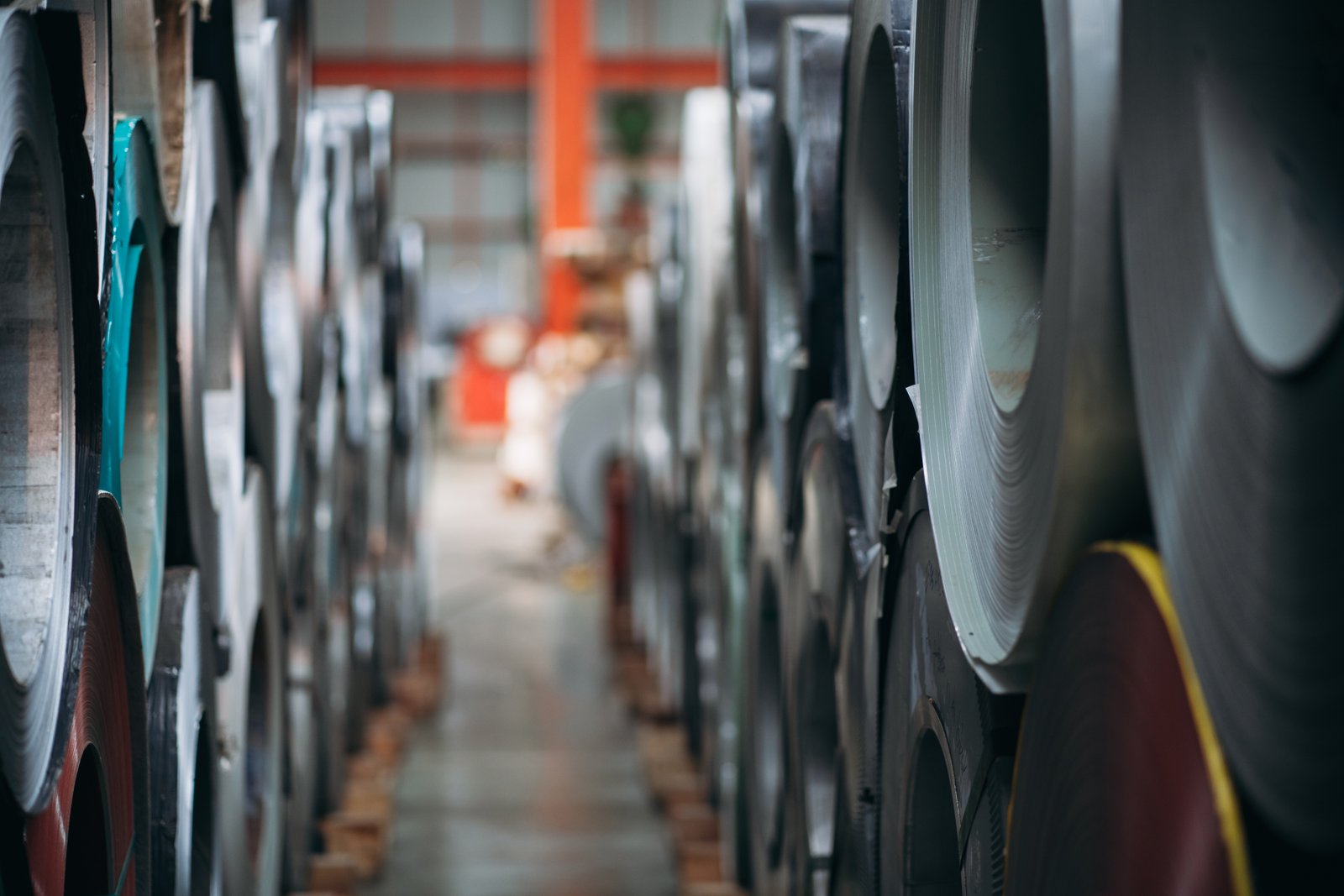
The fundamental role of solution annealing is to ensure the stainless steel is in its optimal metallurgical condition to fight corrosion. It is a targeted, high-temperature process specifically engineered to undo the damage of sensitization. This is particularly crucial for the widely used 300-series austenitic stainless steels. Any fabrication process that involves heating the material into the sensitization range (425-815°C), most notably welding, can compromise its integrity. Solution annealing corrects sensitization in stainless steel8 by dissolving the chromium carbides that form at the grain boundaries, ensuring that chromium is evenly distributed throughout the alloy. This allows the formation of a continuous, robust passive layer that is the key to corrosion resistance. The treatment also relieves all internal stresses and results in a uniform, equiaxed grain structure, which improves overall toughness and ductility.
Maximizing Corrosion Resistance via Microstructural Homogenization
The single most important benefit of solution annealing is the maximization of corrosion resistance, particularly against intergranular attack. As we've established, when austenitic stainless steel is sensitized, chromium carbides form along the grain boundaries, depleting the adjacent areas of the chromium needed to maintain the protective passive layer. Solution annealing directly reverses this. By heating the steel to a high temperature (e.g., 1040°C for 304/316 grades), the carbides are dissolved, and the chromium is put back into "solution" within the austenite matrix.
The subsequent rapid quench is what locks this homogenous state in place. This ensures that the grain boundaries have the same high chromium content as the rest of the material, allowing for the formation of a uniform, uninterrupted passive film. This is absolutely critical for equipment used in the chemical processing, pulp and paper, and marine industries. For example, a client that manufactures large tanks and piping for a chemical plant uses our Bogie Hearth Annealing Furnaces to solution anneal their large welded fabrications. They cannot risk even microscopic corrosion pathways that could lead to leaks of hazardous materials. The solution annealing process is a certified step in their manufacturing protocol, mandated by industry codes like ASME, to guarantee the material's integrity.
This homogenization also improves the steel's resistance to other forms of corrosion, such as pitting and crevice corrosion, by eliminating compositional variations that can act as initiation sites for localized attacks. The result is a material that performs predictably and reliably, living up to its "stainless" name even in aggressive service environments. It's a foundational treatment for ensuring long-term asset integrity.
Correcting the Effects of Welding and Fabrication
Welding is an essential fabrication technique, but it is the most common cause of sensitization in austenitic stainless steels. During welding, the area adjacent to the weld bead, known as the heat-affected zone (HAZ), experiences a thermal cycle that often involves cooling slowly through the critical 815°C to 425°C temperature range. This is the perfect condition for carbide precipitation, making the HAZ highly susceptible to intergranular corrosion. This is often referred to as "weld decay."
Solution annealing performed after welding is the most effective way to eliminate this problem. By heating the entire fabrication to the solution annealing temperature, any carbides formed in the HAZ are re-dissolved. The subsequent quench ensures they do not re-form, completely healing the heat-affected zone and restoring its corrosion resistance to that of the parent metal. This is standard practice for critical components that cannot be made from low-carbon ("L" grade) or stabilized grades of stainless steel.
Consider a manufacturer of custom boat components, like railings and exhaust ports for luxury yachts. They weld standard 304 stainless steel. Without post-weld treatment, these components would show rust stains and signs of failure around the welds within months of exposure to saltwater spray. By implementing a post-weld solution annealing step, they ensure the entire component has uniform corrosion resistance, maintaining its structural integrity and aesthetic appeal for years. This process transforms a potential weak point into a seamless, robust structure.
Improving Mechanical Properties like Toughness and Ductility
While the primary driver for solution annealing is corrosion resistance, it also has significant benefits for the material's mechanical properties. The process effectively erases any prior cold work or thermal history, resulting in a fully softened, highly ductile condition. The high-temperature soak allows for full recrystallization and grain growth, which eliminates internal stresses that could lead to stress corrosion cracking.
The resulting homogenous, equiaxed austenitic microstructure provides excellent toughness, which is the material's ability to absorb energy and deform plastically without fracturing. This is particularly important for equipment that may be subjected to impact loading or operates at very low (cryogenic) temperatures, where brittle fracture is a major concern. Austenitic stainless steels are renowned for their superb cryogenic toughness, but this property is only guaranteed when they are in the properly solution-annealed condition.
For instance, manufacturers of pressure vessels and cryogenic storage tanks for liquefied natural gas (LNG) rely on solution annealing to ensure their materials have the required toughness to operate safely at -162°C. Any sensitization or residual stress in the material would create a risk of brittle fracture. Therefore, solution annealing is not just a treatment for corrosion resistance in this context; it is a critical safety requirement that ensures the material's mechanical reliability under extreme service conditions. It provides the optimal combination of strength, ductility, and toughness.
Solution annealing dissolves chromium carbidesTrue
The high-temperature process dissolves harmful chromium carbide precipitates that form during welding or improper heating, restoring corrosion resistance.
Solution annealing only improves corrosion resistanceFalse
While corrosion resistance is the primary benefit, solution annealing also improves mechanical properties like toughness and ductility by creating a uniform microstructure.
How to choose between bright annealing and solution annealing for specific applications?
Facing a decision between bright and solution annealing? The choice isn't just about heat; it's about your product's final requirements and your process workflow. Choosing incorrectly can mean a dull finish on a cosmetic part or, worse, premature failure in a corrosive environment. You need a clear framework to match the treatment to the application's true needs. This is about balancing surface quality, corrosion resistance, and total production cost.
Choose bright annealing when the primary goals are a superior, scale-free surface finish and stress relief for formability, especially for thin-gauge products. Opt for solution annealing when the absolute priority is maximizing corrosion resistance, particularly for welded fabrications or materials exposed to aggressive environments.
The selection process is a matter of prioritizing your end goal. At AKS, my first question to a client is always: "What is the single most important property for your final product?" If the answer is "a flawless, mirror-like appearance" for a consumer product, the path almost always leads to bright annealing. If the answer is "guaranteed resistance to saltwater for 20 years" for a marine component, then solution annealing is non-negotiable. Often, the application dictates the choice. For decorative automotive trim, it's bright annealing. For a chemical processing tank, it's solution annealing. Understanding this distinction prevents costly mistakes and ensures the heat treatment process adds maximum value to the final application.
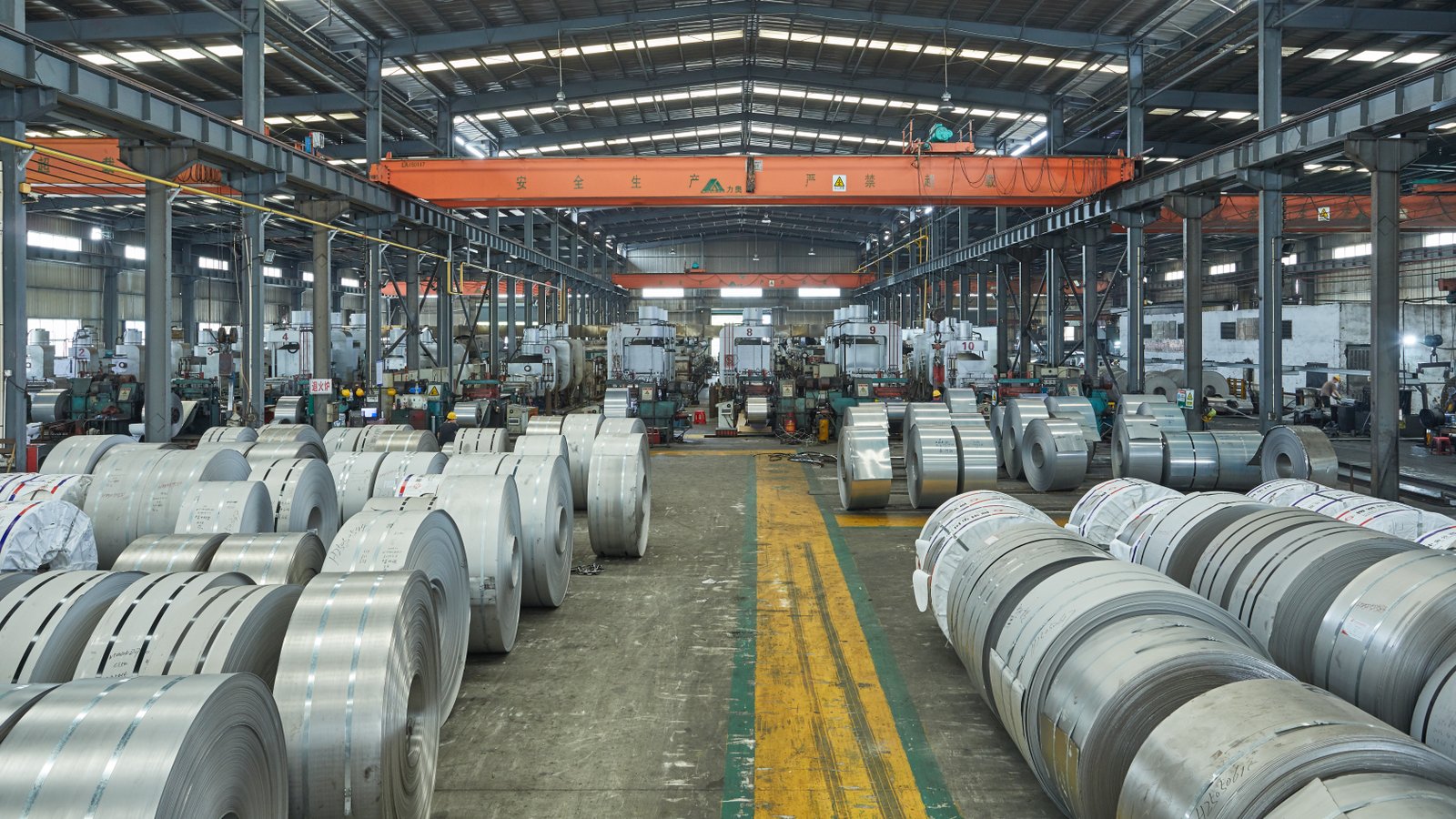
Making the right choice between bright annealing and solution annealing requires a clear-headed analysis of the application's demands, the material's characteristics, and the overall manufacturing context. It's a balancing act between three key factors: the required surface finish, the necessary level of corrosion resistance, and the total cost of production. A cosmetic part for an indoor appliance has vastly different requirements than a structural component on an offshore platform. As furnace designers, we guide our customers through this decision by breaking it down into a logical process. We help them evaluate the service environment of their product, the fabrication steps involved (especially welding), and their own production capabilities. This ensures they invest in a thermal process that delivers the necessary performance without over-engineering the solution or creating unnecessary production bottlenecks.
Analysis of the Application's Requirements
The first step is always to define the end-use of the component. This will determine the hierarchy of properties needed. Is the part primarily aesthetic or functional? Will it be seen by the consumer? Will it be exposed to corrosive substances? Answering these questions provides the clearest initial direction. For instance, components for kitchen appliances, architectural trim, automotive brightwork, and electronics enclosures prioritize a pristine surface finish. For these, bright annealing is the ideal choice as it delivers a finished-to-size, aesthetically pleasing part directly from the furnace, minimizing handling and eliminating costly secondary finishing operations.
Conversely, if the component is part of a system handling corrosive chemicals, seawater, or high-temperature gases, then metallurgical integrity trumps surface appearance. Examples include heat exchanger tubes, pressure vessels, marine hardware, and welded piping systems. In these applications, the prevention of intergranular corrosion or stress corrosion cracking is the paramount concern. Therefore, a full solution anneal is mandatory to ensure the material's microstructure is optimized for maximum corrosion resistance, even if it means the part will have a scaled surface that requires subsequent pickling or blasting.
A useful exercise is to classify the application into one of three categories: Aesthetic-Driven, Performance-Driven, or Balanced. An Aesthetic-Driven part, like a high-end faucet, points to bright annealing. A Performance-Driven part, like a valve body for a chemical plant, demands solution annealing. A Balanced application, such as food-grade tubing that must be both cleanable (bright surface) and corrosion-resistant, might require a bright solution anneal, combining both process goals in an advanced furnace.
Impact of Material Thickness and Fabrication Method
The physical form of the material and how it is fabricated are the next critical factors. Bright annealing is most effective and economical for thin-gauge materials like strip, foil, wire, and thin-walled tubing. This is because the gas-quenching systems used in bright annealing furnaces are highly effective at rapidly cooling these low-mass products. As mentioned, for thick plates, heavy forgings, or large castings, gas quenching may not be fast enough to prevent the re-precipitation of carbides, making a traditional solution anneal followed by a water quench the only metallurgically sound option.
The fabrication method, especially welding, is often the deciding factor. If an austenitic stainless steel part is welded, the heat-affected zone (HAZ) is almost certainly sensitized unless a low-carbon (L-grade) or stabilized grade is used. To restore the corrosion resistance of this HAZ in standard grades, a post-weld solution anneal is required. Since the entire welded assembly must be treated, this is often done in large batch furnaces like our Bogie Hearth or Bell-Type models, followed by a quench. This process is inherently a solution anneal, and the surface finish is secondary to restoring the part's integrity.
A client manufacturing welded stainless steel manifolds for industrial machinery provides a clear case. They use standard Grade 304 stainless steel. While a bright finish would be nice, the welds create a critical point of failure from corrosion. Therefore, their standard procedure is to solution anneal every manifold after welding. The resulting oxide scale is then removed by bead blasting. They correctly prioritize performance over aesthetics because a leaking manifold is a far more significant problem than a dull surface finish.
Total Cost of Ownership and Production Workflow
Finally, the decision must be grounded in economic reality. While a bright annealing furnace has a higher initial capital cost, it can lead to a lower total cost of ownership in the right application by eliminating the entire pickling line. This reduces costs associated with chemicals, water, energy, waste treatment, labor, and factory floor space. For high-volume production of parts where surface finish is key, the ROI on a bright annealing line can be very rapid.
Conversely, for a job shop or a manufacturer dealing with a wide variety of part sizes, including many heavy sections, the flexibility of a conventional furnace followed by pickling might be more economical. The capital outlay for the furnace is lower, and the pickling line can process parts of almost any size and shape. The choice becomes about a streamlined, integrated process (bright annealing) versus a more flexible, decoupled process (conventional anneal + pickle).
Here is a simple decision matrix to help summarize the choice:
| Factor | Favors Bright Annealing | Favors Solution Annealing |
|---|---|---|
| Primary Goal | Perfect surface finish, formability | Maximum corrosion resistance |
| Application | Decorative, consumer goods, electronics | Chemical, marine, heavy industrial |
| Material Form | Thin strip, wire, tube, small parts | Thick plate, forgings, large weldments |
| Welding | Not present or using L-grades/stabilized | Present in standard grades (post-weld) |
| Workflow | Seeks to eliminate pickling step | Pickling/blasting is an acceptable step |
Ultimately, the best choice is the one that produces a part that meets all of its engineering and aesthetic requirements at the lowest possible total cost. As a partner to our clients, we don't just sell furnaces; we provide the process expertise to help them navigate this decision, ensuring the thermal treatment they select is a source of value and a competitive advantage for their business.
Bright annealing prioritizes surface finishTrue
Bright annealing is chosen when a superior, scale-free surface finish is the primary requirement, especially for aesthetic or consumer-facing products.
Solution annealing is only for appearanceFalse
Solution annealing is primarily used to maximize corrosion resistance and restore material integrity, often resulting in a scaled surface that requires additional finishing.
Conclusion
Ultimately, the choice between bright and solution annealing hinges on metallurgical intent. Bright annealing prioritizes a flawless surface finish and ductility for forming, while solution annealing is a corrective treatment focused on homogenizing the microstructure to guarantee maximum corrosion resistance in demanding, critical applications.
-
Learn the key differences between bright and solution annealing processes. ↩
-
Discover how different heat treatments enhance the functionality of steel products. ↩
-
Understand how precise bright annealing improves kitchenware quality and reduces costs. ↩
-
To understand how bright annealing perfects surface and formability of metals ↩
-
Learn how chromium depletion leads to intergranular corrosion in stainless steel ↩
-
Learn about the bright annealing process and its benefits for stainless steel ↩
-
Understand the importance of atmosphere control in preventing oxidation during bright annealing ↩
-
Learn the process of reversing sensitization effects to improve stainless steel's durability ↩

